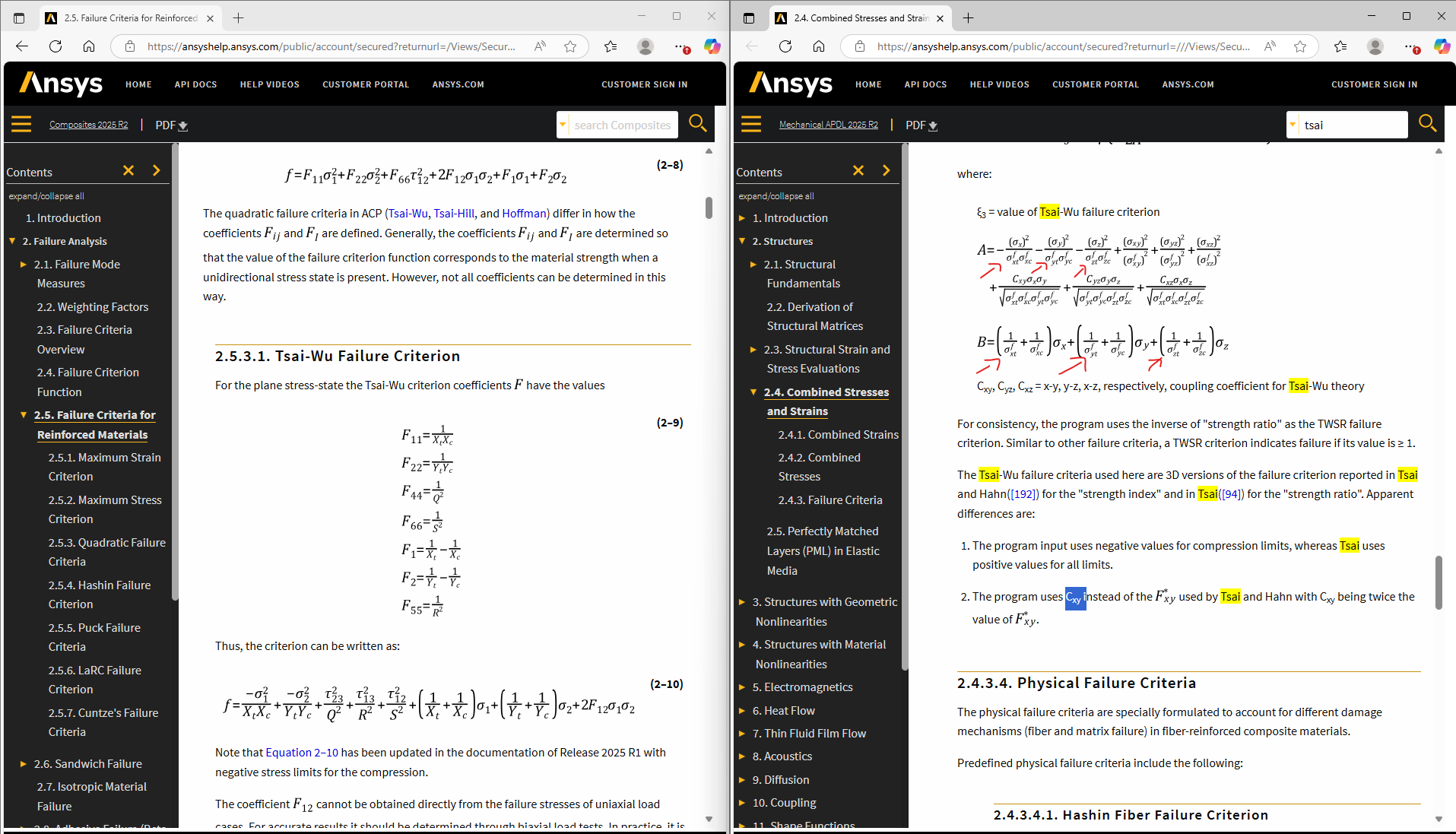-
-
August 7, 2025 at 1:56 pm
nicholel
SubscriberI'm curious about how the Ansys solver derives the coefficients for the whole composite in the Tsai-Wu composite failure criterion that are normally determined through material testing (F1, F2, F3, etc. which are defined in the Tsai-Wu theory: Tsai-Wu Wikipedia). I'm curious why the Tsai-Wu coupling constants are for specific materials, and not for the composite as a whole.
-
August 12, 2025 at 9:20 am
Thomas Hirche
Ansys EmployeeHi Nicholai,
Few infos upfront: Failure analysis in Ansys can be done either in MAPDL through commad FCTYP or with the Mechanical Composite Failure Tool (also referred to Ansys Composite PrepPost - be aware that ACP Post as a Workbench System is removed since Release 25R1 and now is entirely available through the Composite Failure Tool in Mechanical).
I acknowledge that the MAPDL documentation does not elaborate explicitely on Tsai Wu Coefficients - these are given in the Tsai Wu expression according to the attached snapshot on the right hand side.
The left hand side displays the theory documentation of the Failure Tool in Mechanical - there you can see how the coefficients F_i and F_ij are derived in accordance with the definition from Wikipedia.
Here are the two links to the theory documentation of failure analysis in the Mechanical Composite Failure Tool and for MAPDL. Please be aware of the slight differences on how its being implemented.
- Mechcanical Failure Tool (ACP Post) 2.5. Failure Criteria for Reinforced Materials
- MAPDL Section 2.4.3.3 Tsai Wu under 2.4. Combined Stresses and Strains
Hope that helps
Kind regards
Thomas
-
- You must be logged in to reply to this topic.



-
4512
-
1494
-
1386
-
1209
-
1021

© 2025 Copyright ANSYS, Inc. All rights reserved.







